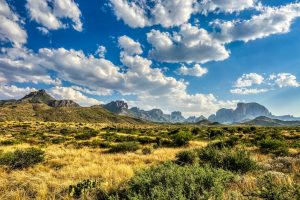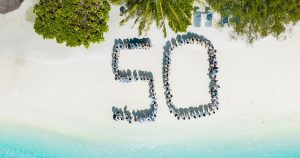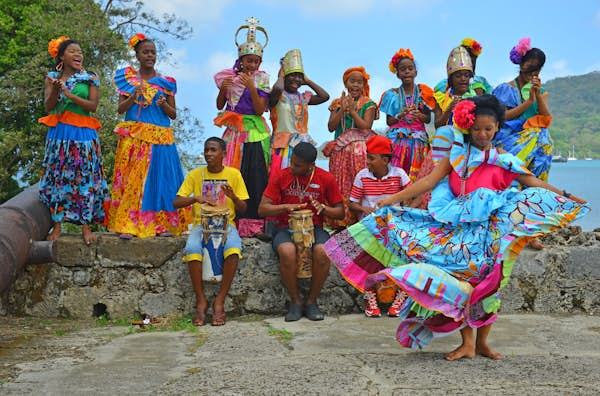
With beautiful islands, Indigenous outposts, dense rainforests, cosmopolitan cities and two magnificent coasts to explore, Panama is somewhere to linger.
But it pays to go at the right time – Panama lies just 9º north of the equator, buffeted by the trade winds, meaning a tropical drenching often comes with the territory.
A key part of what influences your timings will be the activities you want to do while you’re there. If you want to bask on golden sands or trek into the rainforest, visit during the dry season from December to April. Surfers prefer the rainy months from April to December when the best waves are unleashed along the coast. Divers and wildlife spotters gather from August to September, when humpback whales, sharks and orcas congregate off the Pacific shoreline.
Get trusted guidance to the world’s most breathtaking experiences delivered to your inbox weekly with our email newsletter.  Surfers find the best waves in Panama from April to December © John Seaton Callahan / Getty Images
Surfers find the best waves in Panama from April to December © John Seaton Callahan / Getty Images
Many locals would say Panama actually has two climates, one for the Caribbean and one for the Pacific. A visit to the Caribbean Coast can be a damp experience at any time of year, though the sun usually puts in an appearance in the morning and afternoon. The Pacific Coast sees sunny skies (and peak prices) during the dry season from December to April when hordes of sun-seekers flock south from the US.
Don’t underestimate the impact of Panamanian public holidays; normal life shuts down completely for red-letter days such as Día de la Independencia in November, Easter and Christmas. Plan the best time for your visit to Panama with this seasonal guide to climate and events through the year.
The best times for festivals are Easter, November, Christmas and New Year
Panamanians go all out for fun during festivals and Christian feast days, so these holidays are always a lively time to visit. Locals flock to the coast in big family groups, and beaches can be mobbed. Arrive early to stake out a patch of sand.
Plan your travel well ahead of time for any public holiday; hotel prices can rise to double the normal rate, and transport is often booked out weeks in advance.
Panama is warm year round, but temperatures creep even higher from December, peaking around Easter when daytime highs of 90ºF (32ºC) are common. Plan to be somewhere near the ocean or a waterfall if you visit in March or April.
Note that Easter coincides with spring break, when North American students join the tourist throng, adding to the demand for accommodations and transport.
 The shoulder season is the perfect time to go for a hike in Boquete © William Flenniken / Shutterstock
The shoulder season is the perfect time to go for a hike in Boquete © William Flenniken / Shutterstock
The best times for dry weather are mid-December and mid-April
The prime time to visit Panama is during the dry season, but you’ll have to share the experience. Beach areas are swamped by local and international visitors from Christmas through to Easter. Savvy travelers mix up time on the coast with trips to explore the rainforests in the interior.
Be aware that “dry season” is a relative term in Panama. While the Pacific Coast – Panama City and anywhere south of the continental divide – basks under sunny skies, the highlands and Caribbean Coast still get some showers.
This is the busiest time for hiking in Boquete and exploring the San Blas Archipelago, but the wind can reduce visibility for snorkelers.
With the flood of winter sun-seekers, expect lots of competition for rooms, transport and space on the beach all over Panama. Prices are high everywhere; hotel rates are not far off the festival peak throughout the dry season.
The best time for budget travelers to visit is mid-April to early December
The rainy season is the quietest and cheapest time to visit Panama, but you’ll get wet. There are regular rain showers, some of them torrential, but it doesn’t rain all day, every day, so you’ll still get a daily dose of Vitamin D.
This is a time to travel strategically; in late October and November, the rain can be unrelenting, so it pays to be based somewhere with things to do indoors. On the flip side, crowds dissipate, and prices drop to affordable levels across the country. Bucking the national trend, September and October are the driest months to visit the Bocas del Toro islands.
The rainy season coincides with the best swells on both the Pacific and Caribbean coasts, attracting plenty of surfers. August and September are also the prime months to visit Parque Nacional Coiba and the Archipiélago de Las Perlas for sightings of sharks, whales or orcas.
Scuba diving is a year-round activity, including during the rainy season, but land-based activities can be trickier. During the rainiest months, travel can be almost impossible in parts of the highlands.
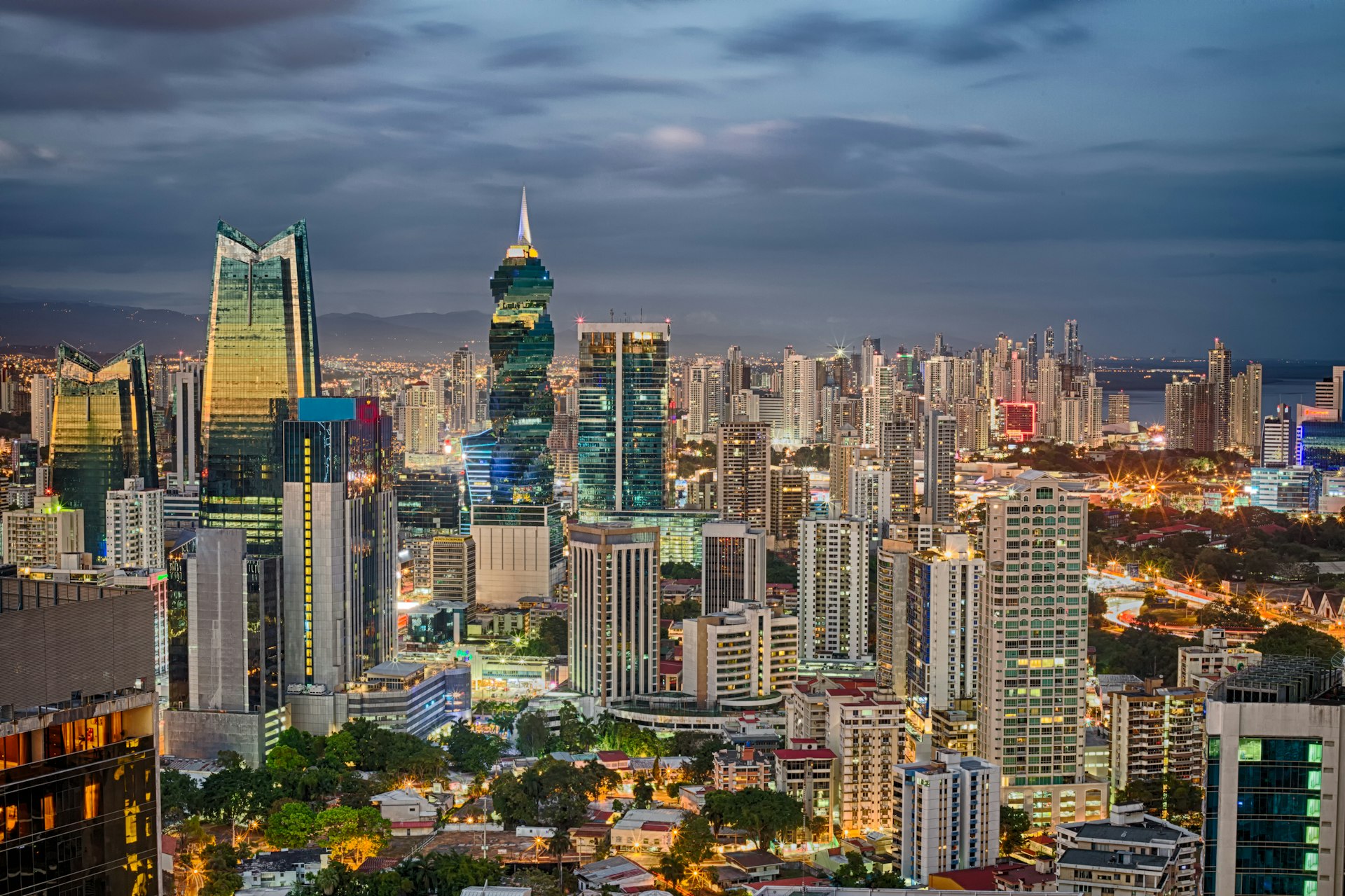 The offseason means rain, but visitors may get a good deal on accommodation costs © Rodrigo Cuel / Getty Images
The offseason means rain, but visitors may get a good deal on accommodation costs © Rodrigo Cuel / Getty Images
Hit the beach in January
With dry season and tourist season at their peaks, this is a big month for travel in Panama, particularly in beach areas. The weather creates prime conditions for kitesurfing, with Pacific temperatures at their warmest and consistent breezes along the coast. And the mountain town of Boquete is filled with people and blooms for its flowers and coffee festival.
Key events: La Feria de las Flores y del Café, Boquete; Panama Jazz Festival, Panama City; Fiesta del Mar, Isla Taboga.
February is Panama’s busiest time of year
Warm, dry weather keeps tourists coming to the Pacific Coast, and the Caribbean Coast also sees plenty of visitors. Depending on the timing of Ash Wednesday, February can be one of the busiest times of the year as the Carnaval rolls into Panama City.
Key events: Carnaval, Panama City (starts the Friday before Ash Wednesday; this can fall in March); Festival de Diablos y Congos, Portobelo (a biennial festival; can also fall in March).
Go surfing in March
The high season is winding down for sun-seekers, but this is still a good month for surfing on both Pacific and Caribbean swells. If Easter falls in March, things get busy for the Semana Santa celebrations.
Key events: Feria Internacional de David, Chiriquí.
Budget travelers should visit in April
April sees the last of the dry weather, and temperatures start to fall to more comfortable levels. If Easter falls in April, crowds surge again, with Semana Santa processions and re-enactments of the crucifixion held all over the country. As April rolls on, tourist numbers dwindle, meaning lower prices and less competition for space.
Key events: Semana Santa (can fall in March); Feria Internacional de Azuero, La Villa de los Santos.
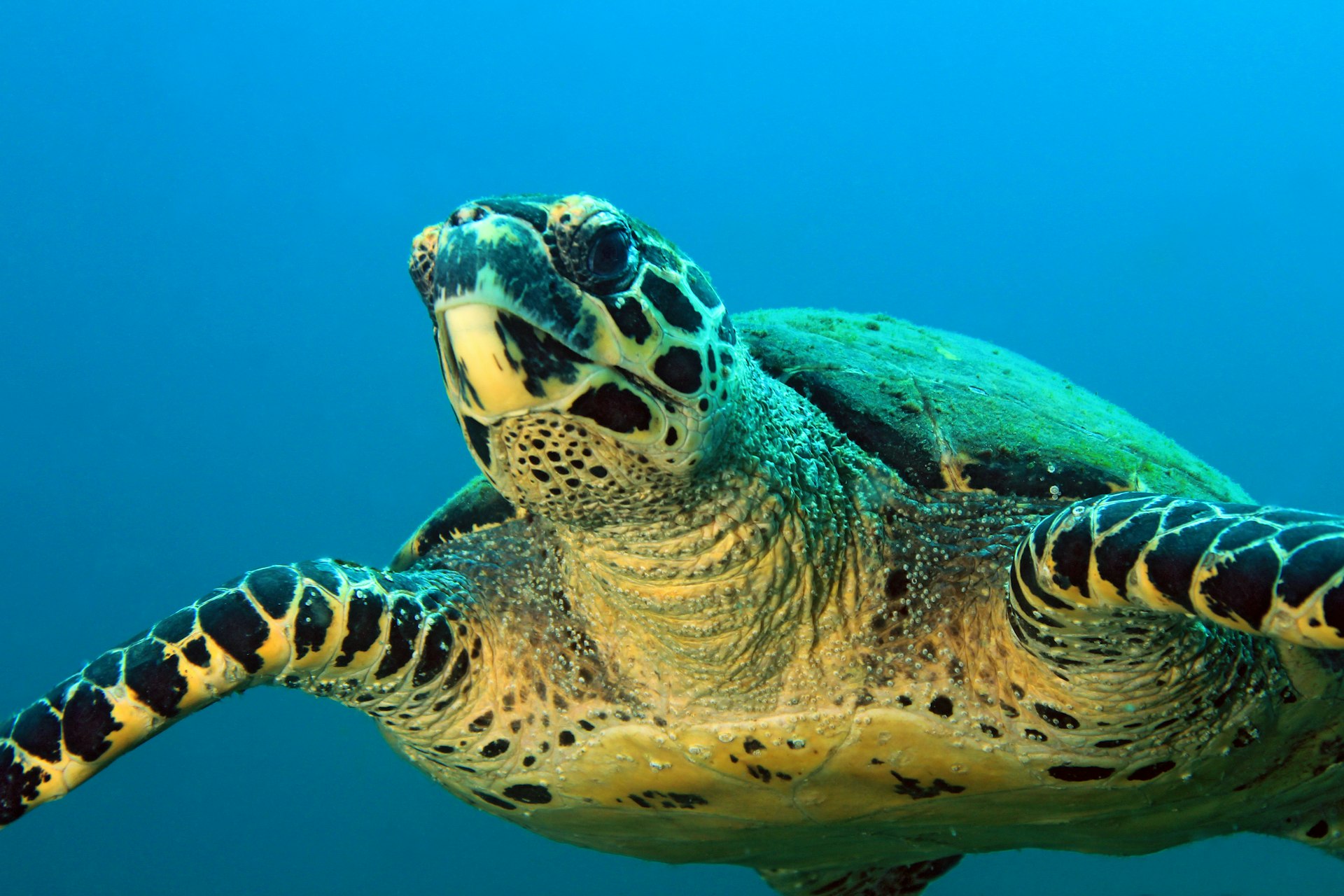 Turtles nest on Panamanian beaches from May to October © Andaman / Shutterstock
Turtles nest on Panamanian beaches from May to October © Andaman / Shutterstock
May is turtle-watching season
With sporadic, refreshing rain showers, the weather is generally pleasant throughout Panama in May. This is the start of the five- to six-month nesting season for loggerhead and green sea turtles on the Caribbean coast.
Key event: Labor Day.
June has regular rain showers
Humidity soars, and rain showers grow more frequent, with regular thunderstorms. Tourist numbers are low, and so are prices, and the worst rains are still several months away. Devils hit the streets for Corpus Christi, mixing up Catholic tradition with Panamanian customs.
Key events: Corpus Christi, La Villa de Los Santos.
Hotels offer cheaper rates in July
Though it’s the middle of the rainy season, the weather is comparatively dry on the Caribbean Coast, though you’ll still see showers most days. July is off-peak for visitors, so hotels offer better rates, and there’s good surf on the Pacific Coast.
Key events: Fiesta de Virgen del Carmen, Santa Catalina; Fiesta de Santa Librada and Festival de la Pollera, Las Tablas.
Go wildlife watching in August
The rainy season continues, but breeding humpback whales can be observed in Parque Nacional Coiba and the Archipiélago de Las Perlas, along with sharks and orcas. Mid-month, Panama City celebrates its founding in 1519 with a stream of high-spirited events.
Key events: Panama La Vieja Day, Panama City; Festival Nacional del Manito Ocueño, Ocú.
Hotels have good availability in September
The rain usually lets up a little, particularly around Panama City. This is still low season, so it’s a good time to travel around the country, with no need for reservations. Bocas takes advantage of the dry weather to host a festival of the sea, with folk music and a feast of seafood.
Key events: Feria Internacional del Mar, Bocas del Toro; Feria de la Mejorana, Guararé.
Enjoy Festival del Cristo Negro in October
In October, Panamanians celebrate regional fairs, such as Isla Tigre in San Blas. In Portobelo, the Festival del Cristo Negro attracts thousands of devout pilgrims from all over the country to pay penance and party.
Key events: Festival of Nogagope, Isla Tigre; Festival del Cristo Negro, Portobelo; Festival del Toro Guapo, Antón.
 Panamanians celebrate regional fairs and festivals in October and November © Antonio Quinzan Bueno / Lonely Planet
Panamanians celebrate regional fairs and festivals in October and November © Antonio Quinzan Bueno / Lonely Planet
Independence Day is celebrated throughout November
Don’t expect to get much done in Panama in November – the whole country takes off to celebrate multiple independence-related festivals, from both Spain and Colombia. Panama City empties out and beaches fill up, but there’s still plenty of rain, and it can be torrential at times.
Key events: Colón Day; Día de la Independencia (November 28).
December is peak season
The warm-up for the Christmas holidays impacts travel right through December. Locals move around the country in huge numbers, and tourists start to flock in from elsewhere, particularly North Americans seeking winter sunshine. Christmas itself sees maximum demand and peak prices.
Key events: Christmas; New Year.


